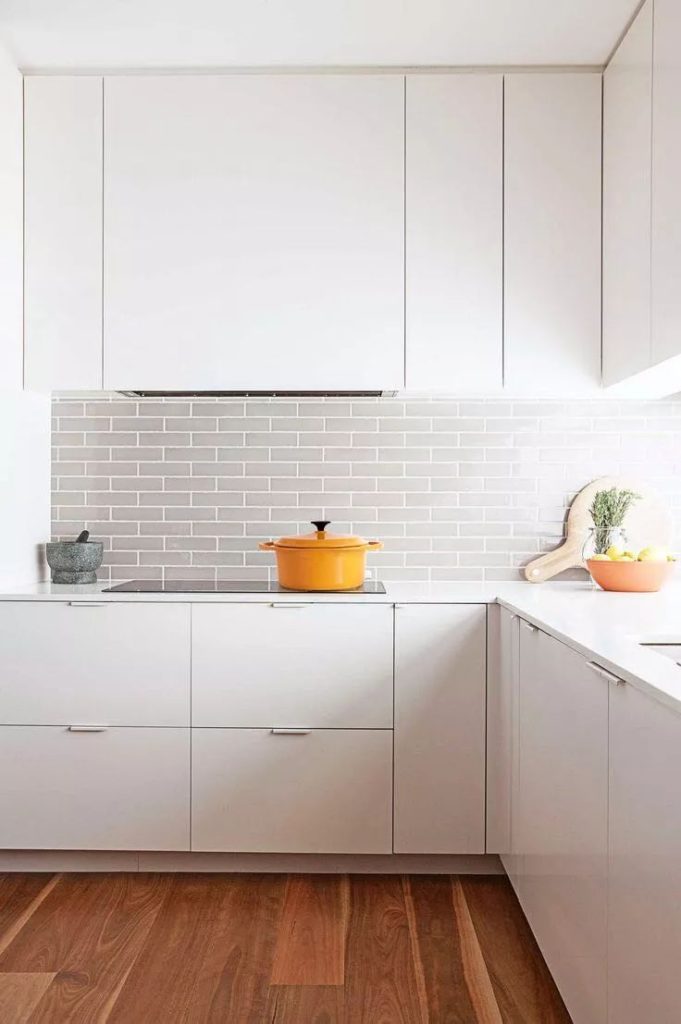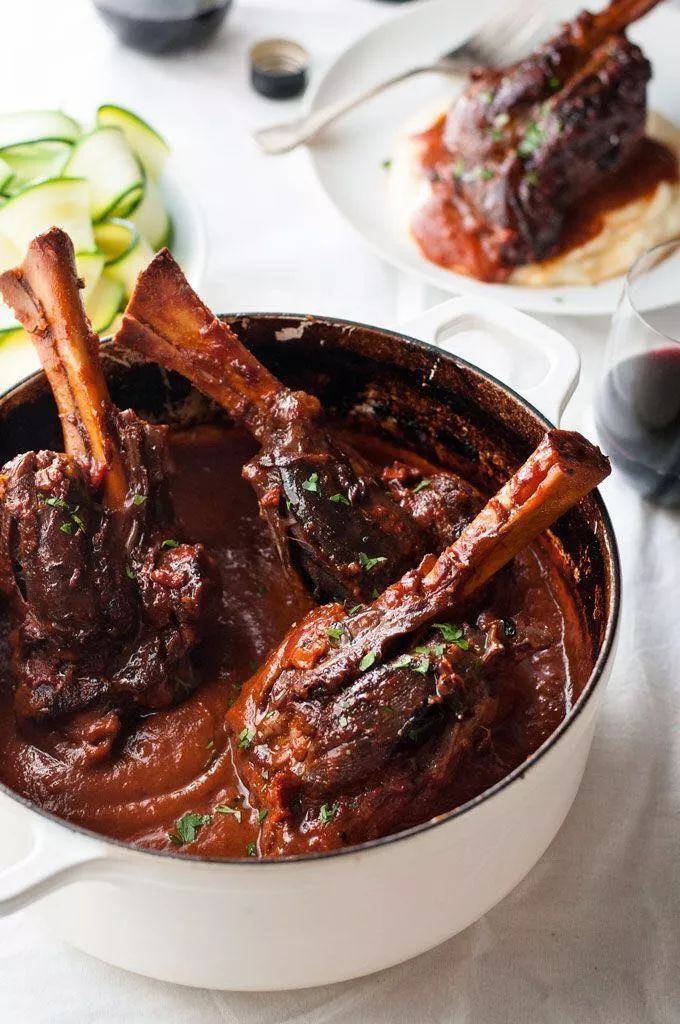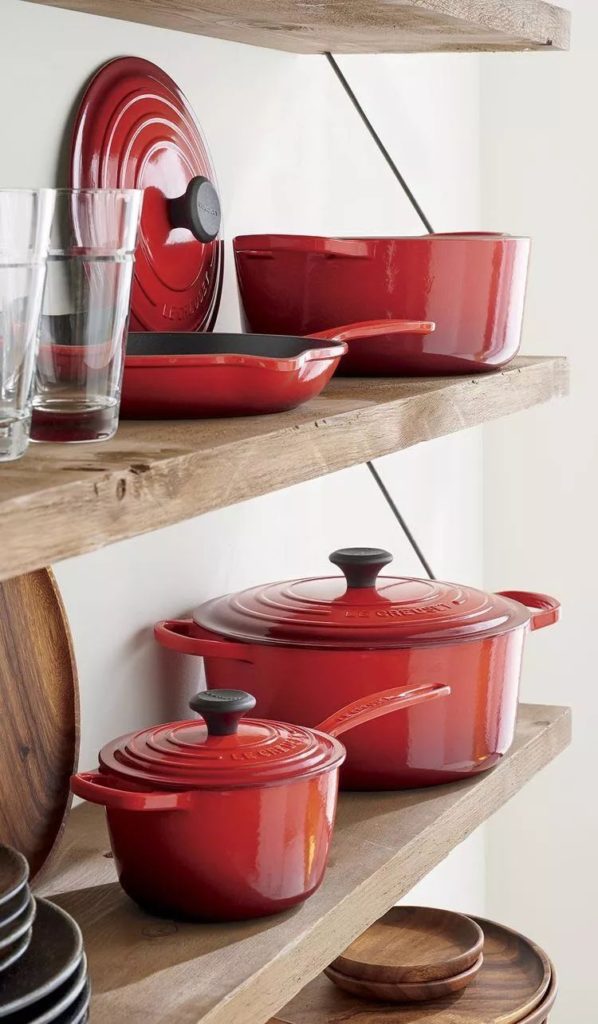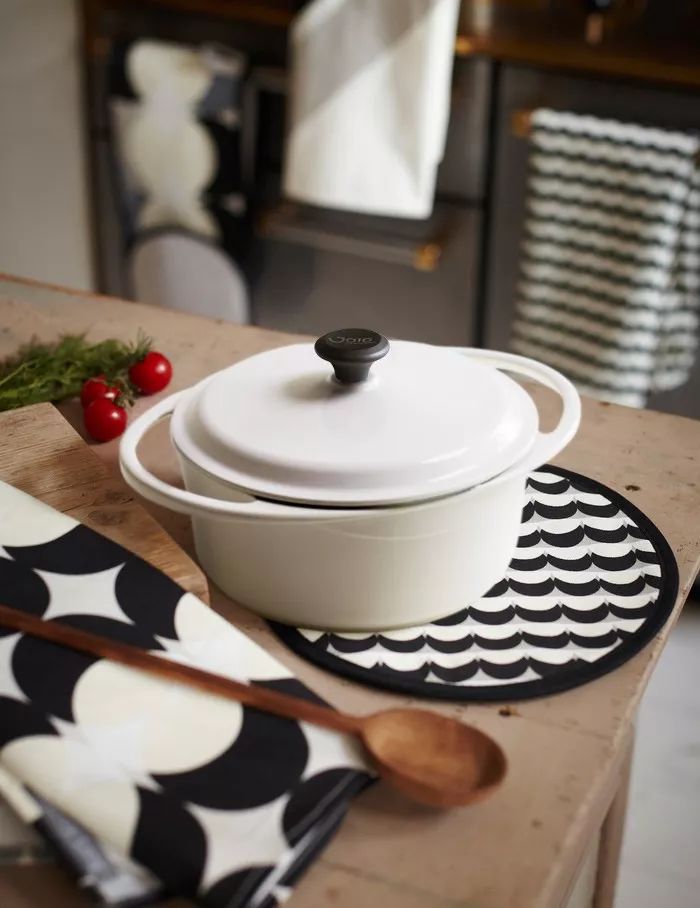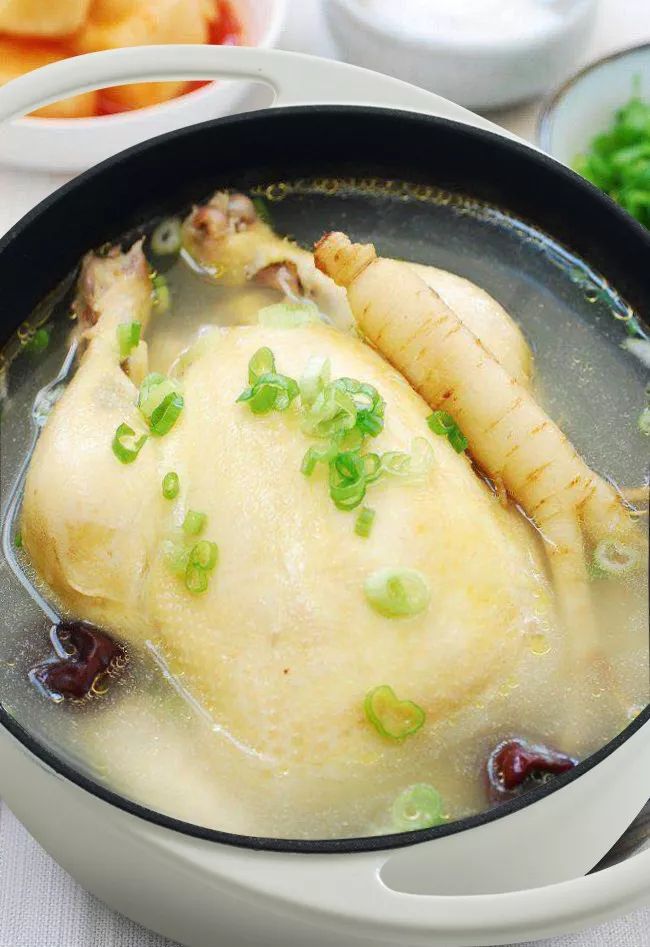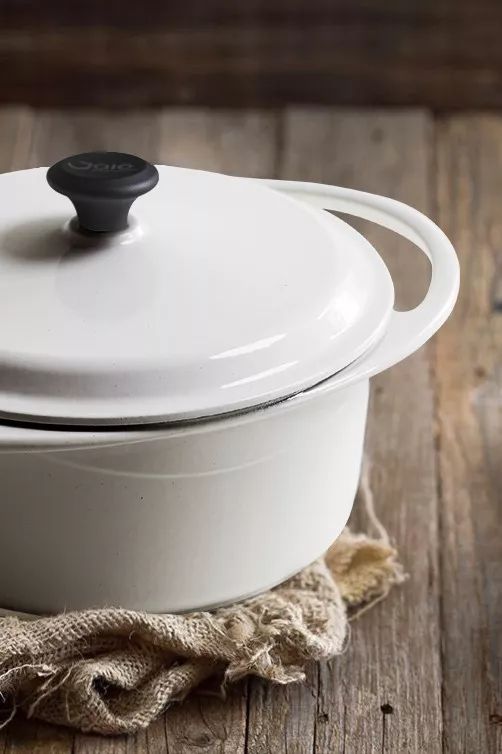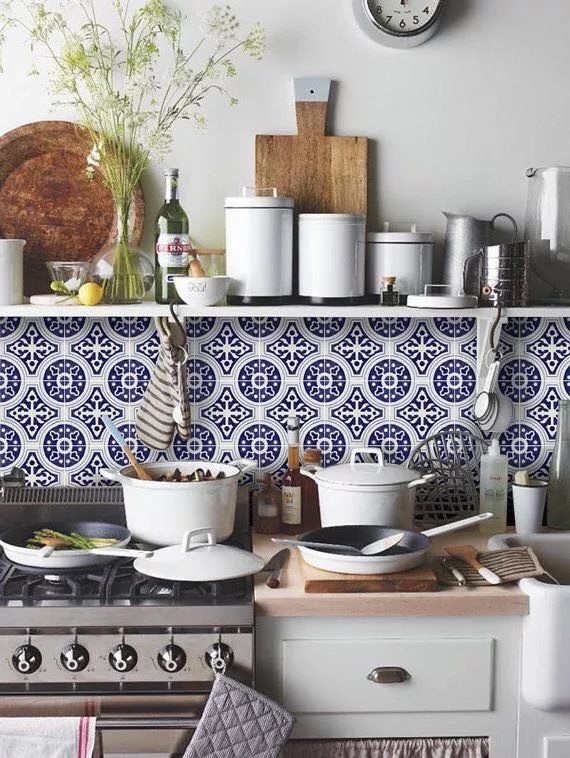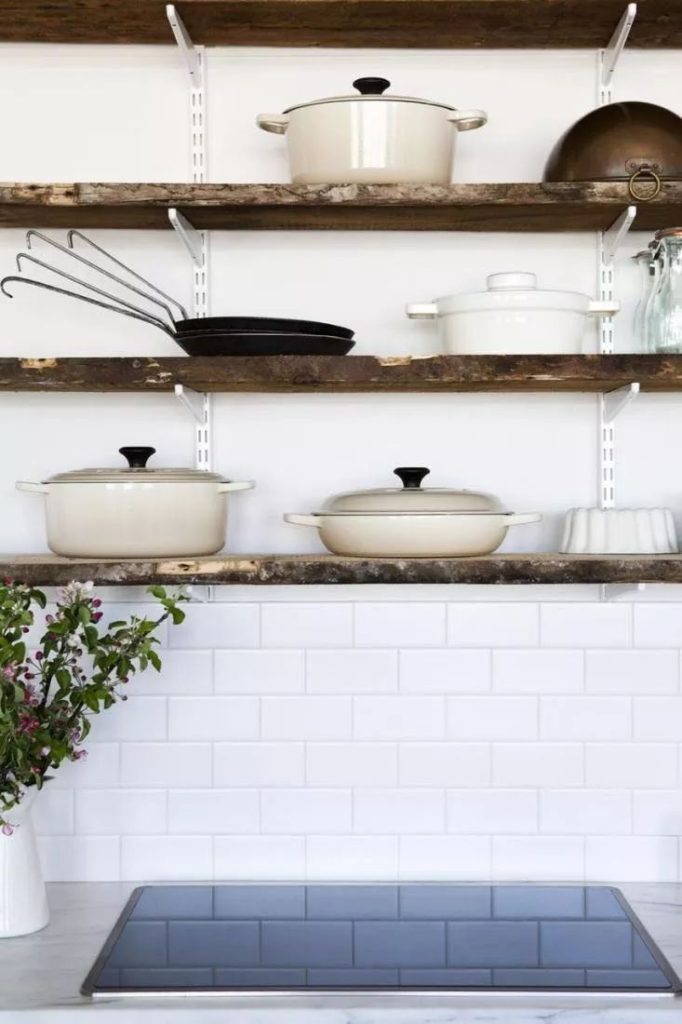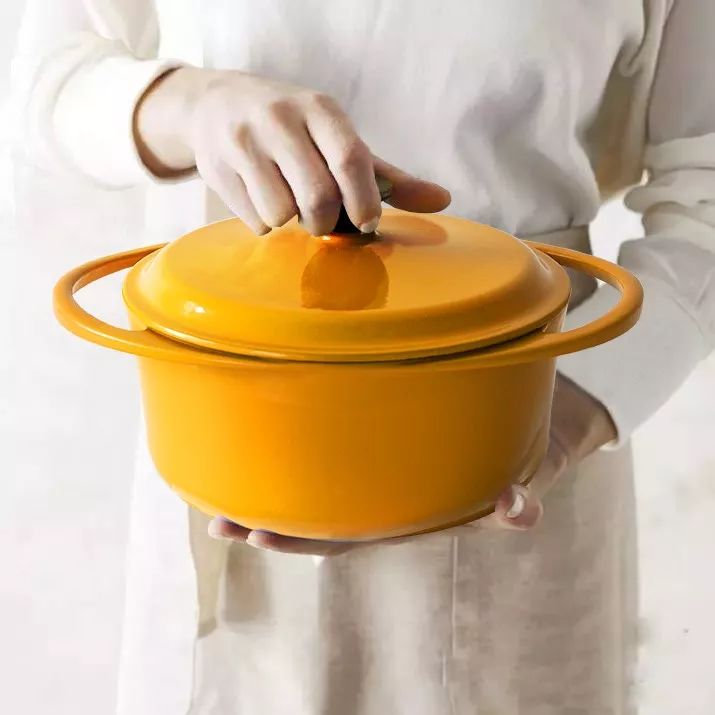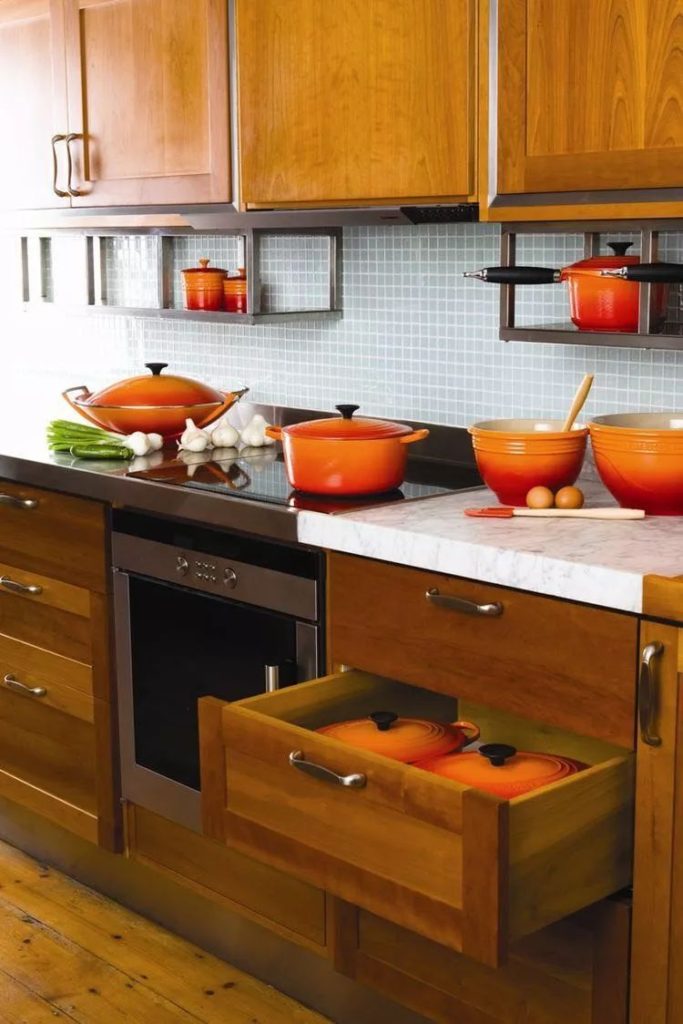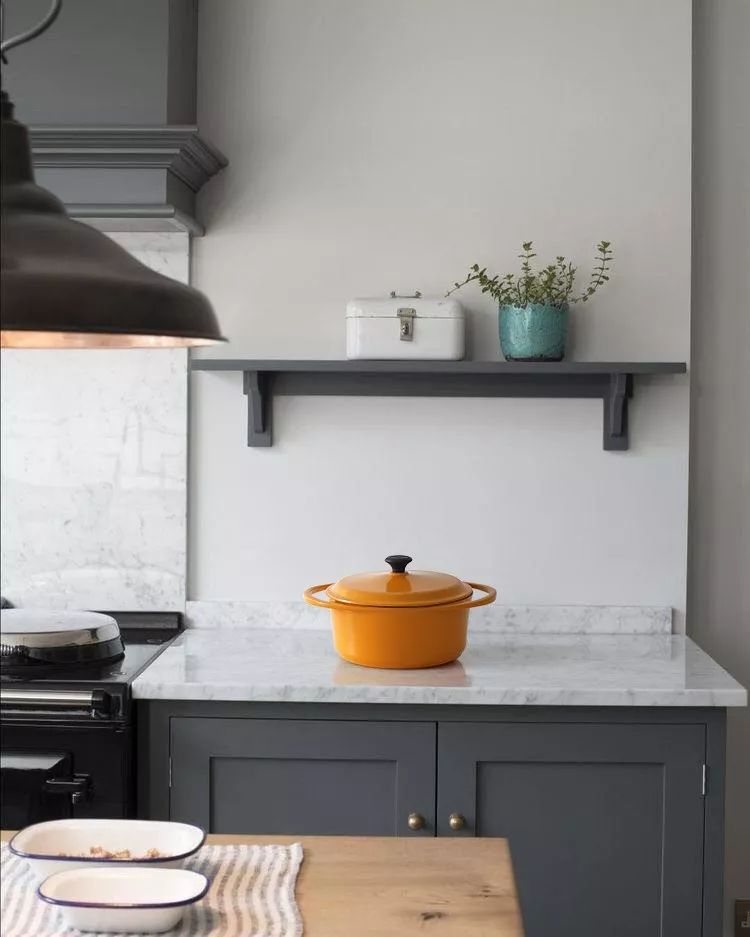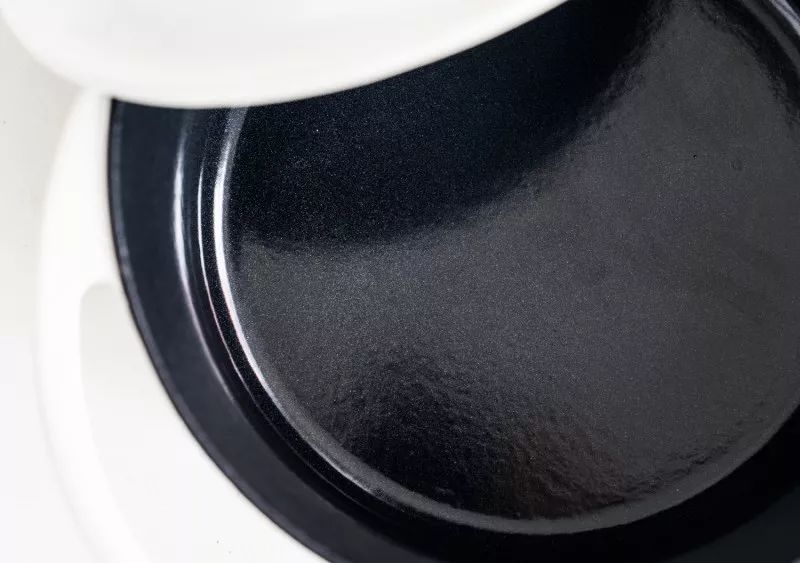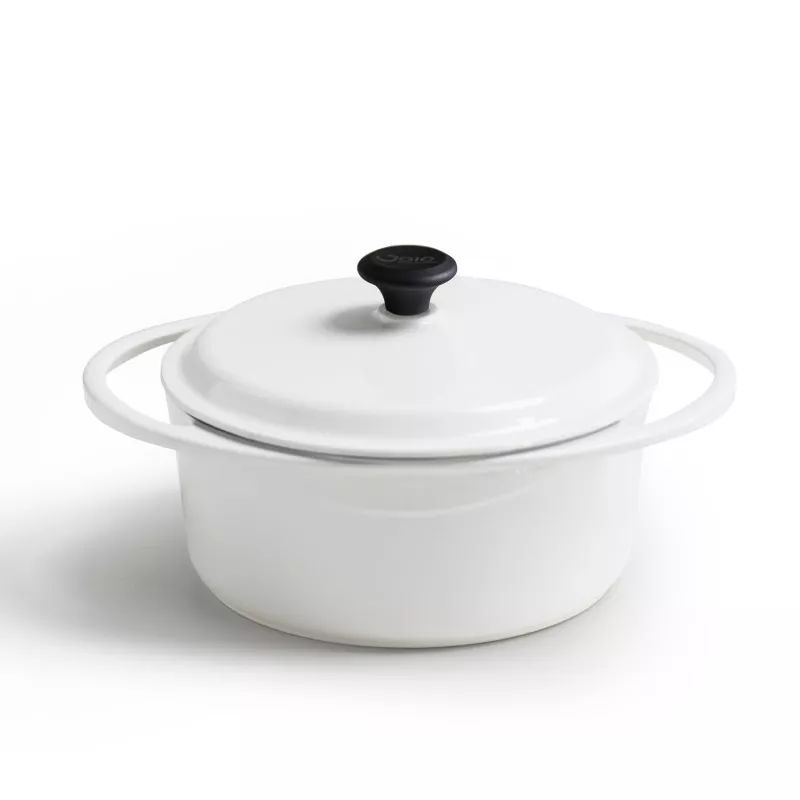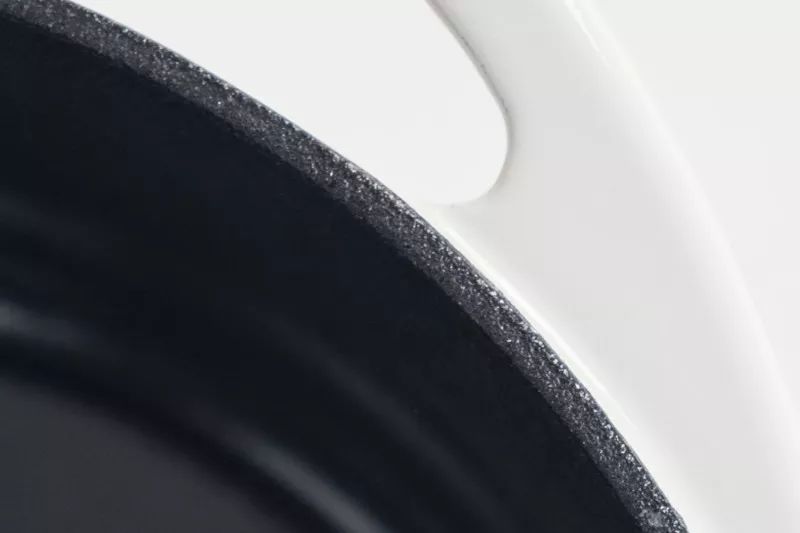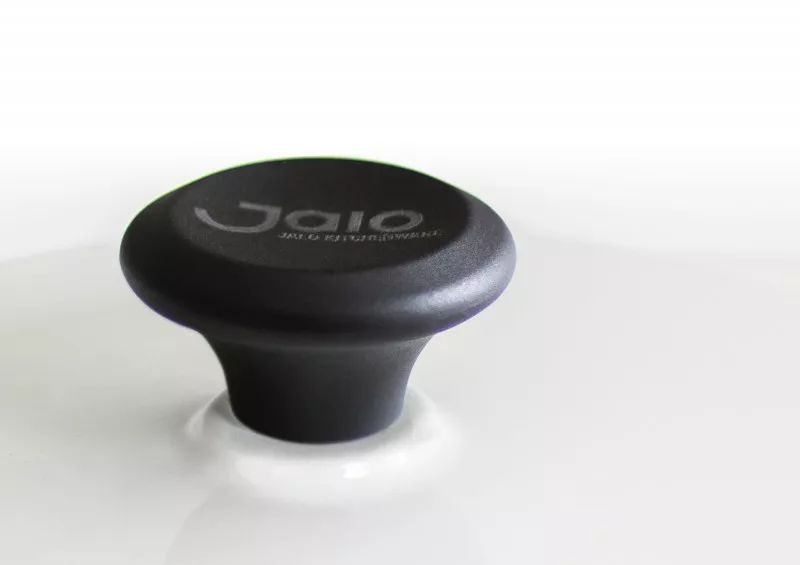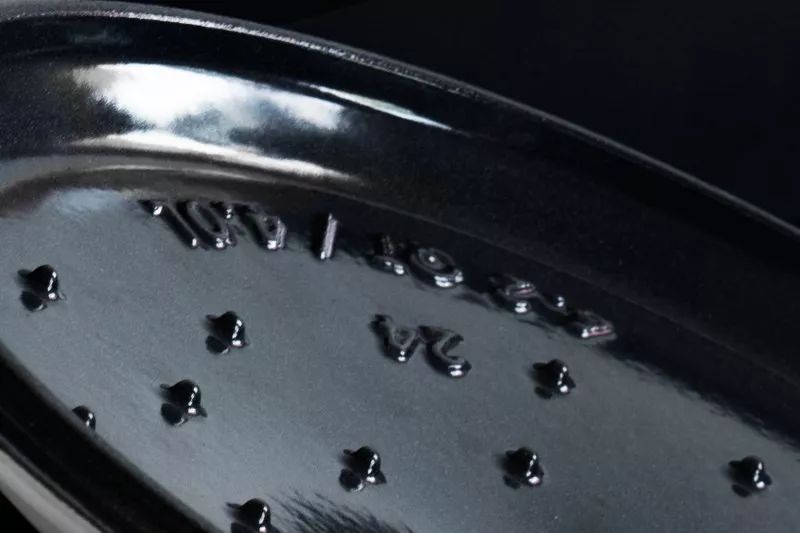What you should know before buying a cast iron skillet?
What items can instantly improve your happiness?
A beautiful piece of porcelain, a colorful cast iron pot. Porcelain is easy to understand, it looks good, feels good, and holding it while eating plump Japanese rice makes you feel like life is sweet. But why the cast iron pot? Because it can cook meats that other pots simply cannot.
Made of cast iron, a pot weighs at least eight or nine catties. The lid can press tightly against the pot rim and heat is distributed evenly from top to bottom. No matter what kind of meat you cook in a cast iron pot, stewing it for one or two hours will make it delicious enough to make you feel that life is worth living. Because it’s good to use, we firmly believe that every household should have a cast iron pot.
Cast iron pots can also be classified by function: stew pot, milk pot, and frying pan. For Chinese people, the most convenient one might be the stew pot.
Colorful cast iron pots can bring a touch of liveliness to a dull kitchen and add a pop of color.
Due to its uniform heating, a cast iron pot has the strongest ability to stew meat among all types of pots. If you like meat and want to eat tender stewed meat, buying a cast iron pot is the best choice.
Chinese pot, French pot
Before introducing cast iron pots, let us first make a comparison between China and France in this industry.
Although China and France are recognized as the two countries with the highest culinary level in the world, many of the world-famous pots are produced in France, such as Le Creuset and Staub, as well as the commonly-seen flat-bottomed iron pot de Buyer in Europe. China, on the other hand, has only one wok and no famous brands. The pots sold in major department stores around the world are mostly Le Creuset and Staub, as well as German pots (those stainless steel pots, which can be considered high-tech products, but may not be related to culinary arts). A Le Creuset or Staub cast iron enamel stew pot with a diameter of about 24cm costs around $200 to $300 worldwide, but are these pots really worth that much money?
These are the key steps to making a cast iron pot: casting, glazing, shaping, and coloring.
There are many types of cast iron pots on the market now, from Germany, Sweden, and some brands that are very popular in China but hard to find abroad, all boasting about the iron ore they use. Experts in the field would just smile at this. From the perspective of iron sand, it is hard to say what impact it has on the pot, as the focus is on the production line. Castings that come off the production line are delicate, fine, and uniform in thickness, while pots that are hand-sanded have lower precision. Judging from the products of Le Creuset and Staub, their castings also come from the same production line.
The real difference between Chinese-made cast iron pots and Le Creuset and Staub may lie in the enamel coating. This is the core technology of the cast iron pot industry at present. For publicity purposes, everyone might think that imported enamel is better, but the situation that Chinese manufacturers have told us is that their enamel material is self-formulated based on imported enamel materials, not entirely imported. The smoothness of the enamel and its degree of adhesion to the casting are the most challenging aspects in all aspects. We have carefully compared the Chinese-made cast iron pots, and their enamel smoothness should be slightly inferior to that of Le Creuset and Staub, but the difference is minimal, and ordinary people would have a hard time telling the difference.
As for the pot’s shape and color, these are design issues. As long as you provide the shape, molds can be made. Except for extremely bizarre shapes, it is not a problem to make the desired shape of the pot, and the same goes for color, which can be formulated. Of course, this is a higher-level task, and it is not easy to achieve the level of Le Creuset and Staub.
A cast iron pot that has a somewhat classical shape and color
How to choose a cast iron pot
When it comes to the advantages of my cast iron pot at home, there are three main ones: the shape of the pot, the color, and the black enamel on the bottom.
1. Pot Shape
I prefer the following brands of cookware: Le Creuset, Staub, and Japanese brand Vermicular.
Le Creuset is like a girl, elegant and graceful, always charming. Staub is like a boy, full of strength and masculine beauty. Vermicular’s design actually has the shadow of the old Le Creuset, but the Japanese have given it a Japanese color, soft and quiet.
Le Creuset has almost no rivals, but the price is very expensive.
Staub Cast Iron Cookware
Japanese Vermicular cast iron pot
There are too many imitations of the designs of Le Creuset and Staub on the market, which are too numerous and boring.
What should an ideal cast iron pot look like? First of all, it should have a classical beauty. I am very fond of this kind of beauty, which gives people a feeling of nostalgia.
In order to find a satisfactory design, we spent a lot of time and energy comparing various pot shapes, and finally chose this pot shape with a little British lineage.
The pot body is round and smooth, with a large handle design, smooth lines, and a classical curved beauty. Looking down, it looks a bit like the planetary rings of Jupiter. The entire design is not ostentatious or mediocre, and it doesn’t become boring even after long-term use.
We have researched the various types of Le Creuset pots from different eras and found that our favorite is not the currently available Le Creuset pot, but rather the ones from the 1960s and 1970s with big ear handles and a classical beauty. Our own pot at home also possesses this kind of beauty.
The type of pot also includes size. My pot has a diameter of 24cm, which is not too big or too small, perfect for daily use in a family of three or four. Even with more people, it can hold the main dish and is suitable for stewing a whole chicken without any problems.
A diameter of 24cm is basically the most commonly used size and is considered a standard option.
2. Color
Le Creuset’s color system is already very complete. Each color scheme can be said to be very beautiful, and Staub is also beautiful, although it takes a different path from Le Creuset.
Vermicular is a Japanese color, ambiguous.
What we like are peaceful and retro colors.
It’s probably difficult to find a pure white cast iron pot on the market. We have always preferred white pots, but they are hard to come by.
I have always believed that white household appliances are the most beautiful. Refrigerators, washing machines, air conditioners, fans, and even kitchen appliances such as rice cookers and electric kettles are most beautiful and durable in white. Over the years, when purchasing these items, if there is a white option available, I always choose white. I find that space gray and gold look tacky and cheap, not to mention the obnoxious LG red and floral patterns.
Therefore, when selecting a cast iron pot, we insisted on having a white one.
Whether in the kitchen or on the dining table, it is quiet and refreshing, giving a sense of tranquility.
Only people who are mentally fulfilled will appreciate white objects.
Orange pot
This orange is soft, warm but eye-catching, and the color is also referenced from a cookware that we have treasured for many years, which has a slow feeling of time.
Previously, our expectations for the kitchen were mostly durability and environmental friendliness. With the update of materials, these aspects are basically guaranteed. The next task is how to make the kitchen more beautiful. In addition to the design of cabinets, walls and floors, we cannot ignore the choice of kitchen utensils. A kitchen with black and white wood or stainless steel as the main color tone, matched with colorful pots and kitchen utensils, always makes people’s eyes brighten up, and the motivation to cook will increase greatly because of this touch of color.
Beautiful pots and beautiful kitchens make cooking a pleasant experience.
Orange pot will become the highlight in the kitchen
If we only choose one colorful pot, we have tried red, blue, orange, yellow, green, and purple. The unforgettable one is the orange, which is yellowed, deep, and soft. We deliberately did not choose the popular gradient color now, just to not destroy its classical beauty.
3. Black glaze
We buy a pot not to impress a “big shot” but because durability is a basic requirement. Black enamel ensures that the pot is more durable, despite the increased cost. We still insist on using black enamel.
Black enamel is the binder between the iron embryo and the surface glaze, like a primer for wall paint. Don’t underestimate this glaze, as this technology comes from the aerospace field. It makes the surface glaze and pot body more tightly combined and more wear-resistant. It can withstand sudden changes in temperature better than ordinary pots. The disadvantage is that the yield rate is low during production, which means that the cost can be 50% higher than pots without black enamel.
After several years of use, we have fallen in love with this black enamel technology because of the fact that the cast iron pot can be less fragile and less demanding. However, durability does not mean it can be treated carelessly. Careful use and maintenance will make its lifespan longer. Don’t forget, cast iron pots can be passed down from generation to generation.
Black glaze is expensive and has a low yield. However, pots that use black glaze have better bonding between the surface glaze and the body, and are less susceptible to scratches.
4. Double-sided mirror glaze
Aside from the base glaze, the surface glaze is also noteworthy.
The glaze on my pot consists of one layer of base glaze and two layers of surface glaze on the interior, and two layers of surface glaze on the exterior. Typically, pots only have one layer of glaze regardless of whether they are from China or abroad. The glaze on my pot is noticeably thicker and more even. Glaze needs to be applied thickly in order to be even and have a smooth and attractive surface.
The surface glaze on my pot uses a mirror glaze. As the name suggests, the surface has a mirror-like gloss after the glaze is applied. It looks great, but it also has some disadvantages. It can amplify the surface’s bumps and dents, which means there is a risk of highlighting the product’s flaws.
The mirror glaze is a mixture of foreign and Chinese glaze materials in a specific ratio. Not all of the glaze materials are from China because after experimenting, this ratio provides the best adhesion and gloss.
5. Abnormal polishing requirements
Where is the glaze applied? It is applied to the castings. Polishing refers to the polishing of the cast iron embryo. There are many burrs on the surface of the iron embryo after pressing into a pot, so it needs to be polished because the surface needs to be level when applying the glaze. We previously bought pots and felt that the polishing was not good, so this time we deliberately selected products with good polishing on both sides of the pot’s surface.
Good cast iron pots have strict inspection standards. During inspection, 21 standards including the presence of air holes, orange peel phenomenon, porcelain dropping, deformation, acid resistance, etc. are checked to ensure that the product is sturdy, beautiful, and meets the food safety standards of the FDA (US Food and Drug Administration).
We all require finer polishing on the edges of the pot.
6. Pot handle
We once hesitated between stainless steel and electric wood handles. Later, we realized that the silver luster of the stainless steel handle did not match our classical pot shape and color. We chose a wooden handle that is small and practical, which can easily lift the pot cover. The processing of the joint between the handle and the enamel surface of the pot cover is actually a difficult part. If the joint is not good, it will cause the enamel surface to be damaged.
In addition, electric wood handles cannot withstand high temperatures for a long time, so it is not recommended to use them in the oven. If you must use them, you can remove the electric wood handle and then put it in the oven.
Wooden handle cast iron pots look better.
7. Water injection cap
Automatic circulating water droplet design on the back of the pot lid, commonly known as water injection cover. The whole pot lid is like a showerhead. Due to the weight of the lid, the water vapor condensed from the food will not escape, but will drip back into the food through the “water droplets”, which maintains the original flavor of the food and makes the aroma more intense when the lid is opened.
It should be noted that the internal circulation does not mean that you can cook without adding water. The evaporation of water vapor is also an important aspect of safe cooking. Nowadays, pressure cookers have designs with evaporating water devices. If the lid is tightly sealed, it can cause the lid to pop open.
Several famous cast iron pots have a design with a water injection lid. To be honest, the ability of the water injection lid to collect water droplets may not be much higher than that of a flat lid, but the water injection lid looks better, and that is certain.
Precautions for using cast iron pots
1.Before the first use:
Use neutral detergent and sponge to clean the cookware. After rinsing thoroughly, wipe dry without leaving any water droplets, and the cookware can be used.
2.Applicable Heat Sources
Gas stoves, electric stoves, radiant stoves, electromagnetic stoves, and furnaces that use gas, coal, or firewood, etc.
Cast iron pots cannot be put in the microwave; when using them in the oven, the electric wooden handle needs to be removed.
When using, if you need to move the cookware, lift or place the cookware, otherwise the bottom of the cookware and the surface of the stove may be scratched.
The size of the pot bottom must be matched with the firepower range of the stove to improve cooking efficiency. Most importantly, it is to prevent burning the pot body to avoid leaving burn marks.
3.The pot is not completely sealed, but it does not affect the taste.
Cast iron pots are not completely sealed, and for safety reasons, it cannot guarantee sealing. The reason why the pot makes delicious food is due to even heating, not sealing, which will not affect the taste of the food you cook.
If it is really tightly sealed, steam will continue to increase pressure in the pot, and there will be no escape channel. Eventually, the pot lid will continue to rise. If this happens, it may cause overflowing, tilting of the pot, and the lid being overturned.
4.Pre-cook over low heat before cooking
Except for soups, please pre-cook the empty pot with low heat for 2-3 minutes before each cooking, which can achieve the best cooking effect.
Do not use high heat to preheat the pot, because cast iron has good insulation performance. If preheated with high heat, the pot will be overheated, resulting in a significant reduction in cooking effect or sticky pot.
5.Cooking Heat: Medium to Low Heat
After pre-cooking with low heat, add the ingredients and gradually increase the heat of the stove, then maintain medium-low heat for cooking. Medium-low heat can provide the best cooking effect, not only for stewing, but also for frying and searing.
High heat is only suitable for boiling water before cooking. After that, whether it is cooking vegetables, noodles or soup, switch back to low heat.
6.Please be careful not to burn yourself with the cooking utensils
Use heat-resistant gloves when cooking to avoid burning your hands.
When cooking on a stove, the handle of the pan will become hot. Please use a dry thick cloth or heat-resistant gloves to help lift the pan.
7.Please handle with care
When using, it is recommended to place the cookware in a stable location to prevent it from falling or being hit by hard objects, which can cause enamel to peel off or be damaged.
If you need to remove the hot pot, please make sure that the cookware is always placed on a wooden board, tripod, or silicone pad, instead of placing it on an unprotected table or wooden floor surface, otherwise it will cause damage to their surface.
Cast Iron Skillet Maintenance Q&A
Q: How to prevent rust?
A: After each use of cookware, it is recommended to apply edible oil to the unglazed part of the pot mouth to prevent rust and maintain the cookware. If not dried in time after use, slight rust spots may appear, which is a normal phenomenon.
Q: How to choose cooking utensils?
A: It is best to use wooden or heat-resistant plastic utensils. Using a metal shovel may scratch the surface.
Other metal tools, including stainless steel spoons and ball-shaped egg beaters, can also be used, but be extra careful not to scratch the enamel on the pot surface, and do not use these metal tools to hit the edge of the pot.
Hand-held electric or battery-powered mixers should not be used in the pot, as their blades can damage the enamel.
Q: What kind of food can be put into the pot?
A: Cookware should not be left with acidic or alkaline foods for a long time (such as foods containing vinegar) to avoid damaging the enamel coating. Of course, any food should not be left in the cookware for too long and should be promptly removed and stored.
Q: Can I put a hot pot directly into the refrigerator?
A: Please do not put hot pots and pans directly into the refrigerator. Although our cookware is sturdy and durable, doing so can cause a thermal shock, leading to enamel cracking or peeling.
Q:How to clean cast iron skillet
A: Please do not rinse hot cookware directly with cold water to prevent the enamel from peeling off due to sudden temperature changes.
After the pot has cooled, use a sponge or soft cleaning cloth with a neutral cleaning agent to clean it.
We do not recommend using wire brushes or any abrasive cleaning agents or scrubbing products.
The pot surface should be regularly cleaned to avoid affecting the heat transfer effect. If there are stubborn stains, soak them in water for 20 minutes before washing to soften the surface stains before cleaning.
After using the cookware, there may be a slight oil and gas odor in the pot, which is a normal phenomenon after use. We recommend that you open the lid of the pot and store it separately from the pot body in a dry place after cleaning and drying, and the oil and gas odor will naturally dissipate.
Q: Can I use a dishwasher?
A: It is not recommended to clean in the dishwasher. Continuous cleaning will cause the enamel polish to become dull.
If you must clean in the dishwasher, you must allow the dishwasher to complete the entire washing program before opening the door, and ensure that the cookware is thoroughly dried.
Q: How to store cooking utensils?
A:When storing, please do not stack large and small pots to avoid damaging the enamel glaze.
If not used for a long time, the pot should be washed and dried, and stored in a cool, ventilated and dry place. Also, be sure to keep it away from steam.

